Green onions have unlimited uses and you can grow them easily in a raised bed. Green onions have dark green stems and white bulbs with roots.
You can eat both parts of green onions. Scallions or green onions or spring onions or salad onions can mature in a short time. You can grow onions from seeds, seedlings, or sets.
The main difference between green onions and regular onions is that green onions do not get to the bulb. Spring onions are the stalks that grow from bulbs of regular onions. The flavor of spring onion is grassy and vegetable.
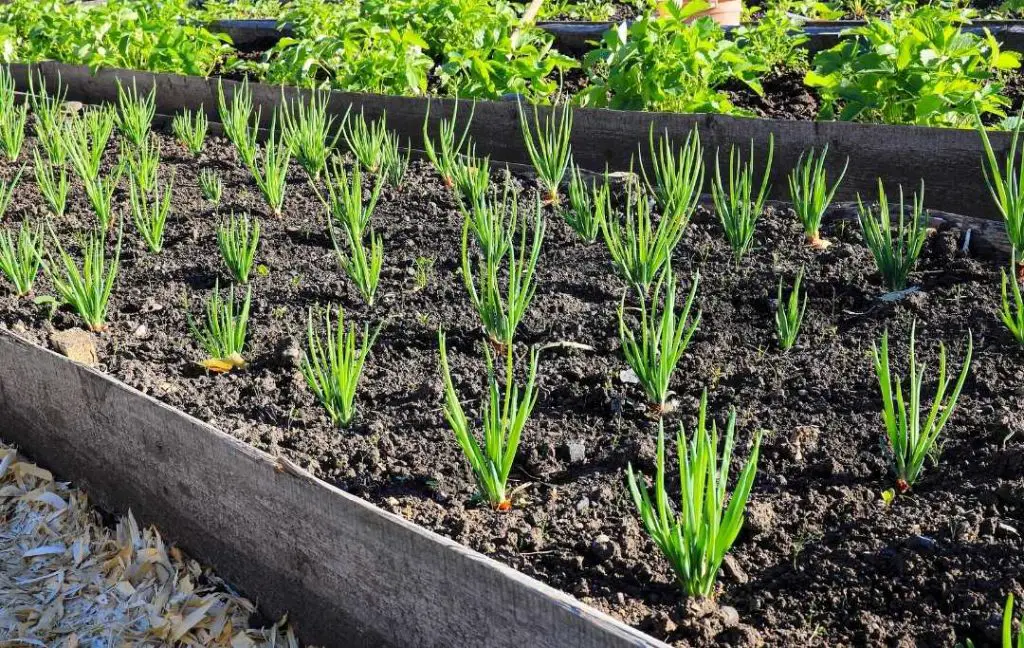
Green onions are versatile crops so they can adjust in any location. You can grow in your backyard, in a raised bed, in a container, on a sunny windowsill, or in the ground.
Don’t think too much and start growing your green onions. Green onions which you grow at your home are fresher which you buy from any grocery store. The pungent flavor of onions will enhance the taste of your salads and soups.
If you provide full sun exposure, water, and fertilizer to green onions then you will get a healthy crop. The right conditions can give a sweet taste and make them perfect for salad.
This is a very easy crop especially for beginners so there is no excuse left behind for not growing green onions. You should take a try and see how quickly the crop matures for your kitchen.
WHEN TO PLANT GREEN ONIONS?
The best time of growing green onions in spring. Although they can tolerate cold and frost, sunlight is a basic factor for their growth so we plant it in spring. They thrive best in full sunlight and spring gives them a good start and when summer comes, you can see the progress.
You can also grow green onions in winter if you prepare seedlings indoors. You can transplant them outdoors when summer arrives.
BEST VARIETIES OF GREEN ONIONS
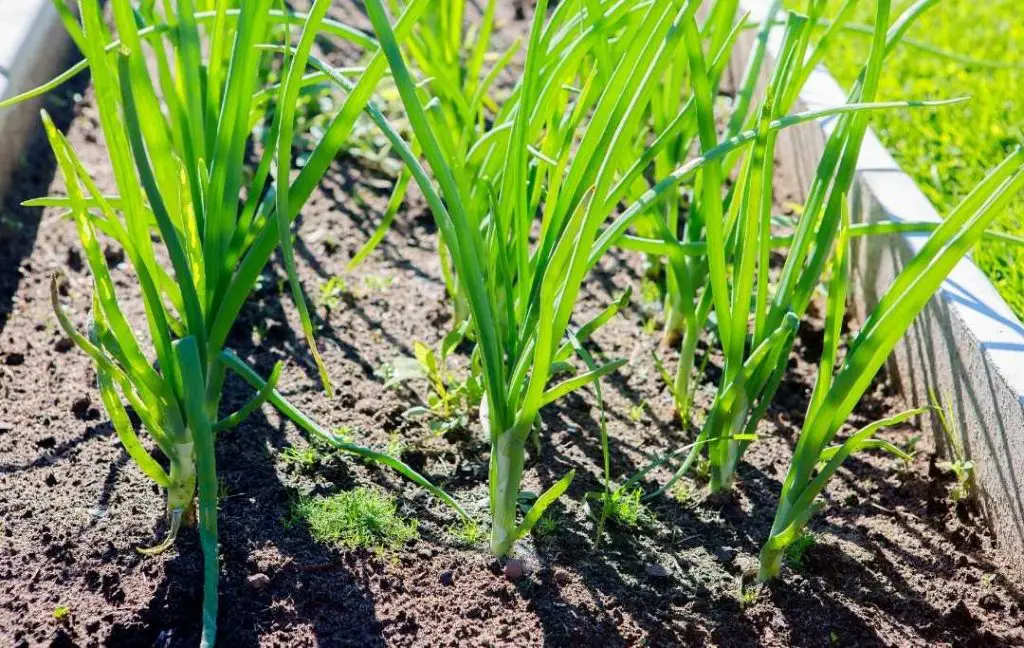
Green onion is a type of onion that is harvested before it’s fully grown. These immature onions are different from the bulbing onion. You can find there is a huge difference between the appearance and taste of both types of onion. Here we are describing your best types of green onions.
WHITE LISBON
This type is best for beginners, short cropping time makes it a perfect option. It is great for overwintering.
APACHE
It is a red variety that gives you a good flavor and crispy texture. With the addition of this green onion, your salad becomes colorful.
POMPEII
The shape of this variety is round and it has silver skin. This is best for pickling and serving on cocktail sticks.
FEAST F1 HYBRID
This variety can be harvested all summer long. This is an outstanding and ideal variety for successive growing.
SOWING SEEDS INDOORS
It is a good option to sow the seeds indoors 8 to 10 weeks before the last frost. You will get better results if you prepare the seedlings for transplanting in the raised bed.
For this purpose you need the following things:
- High-quality seeds from a gardening store or local nursery.
- A small pot that has drainage holes.
- Potting mix
SOWING OF SEEDS
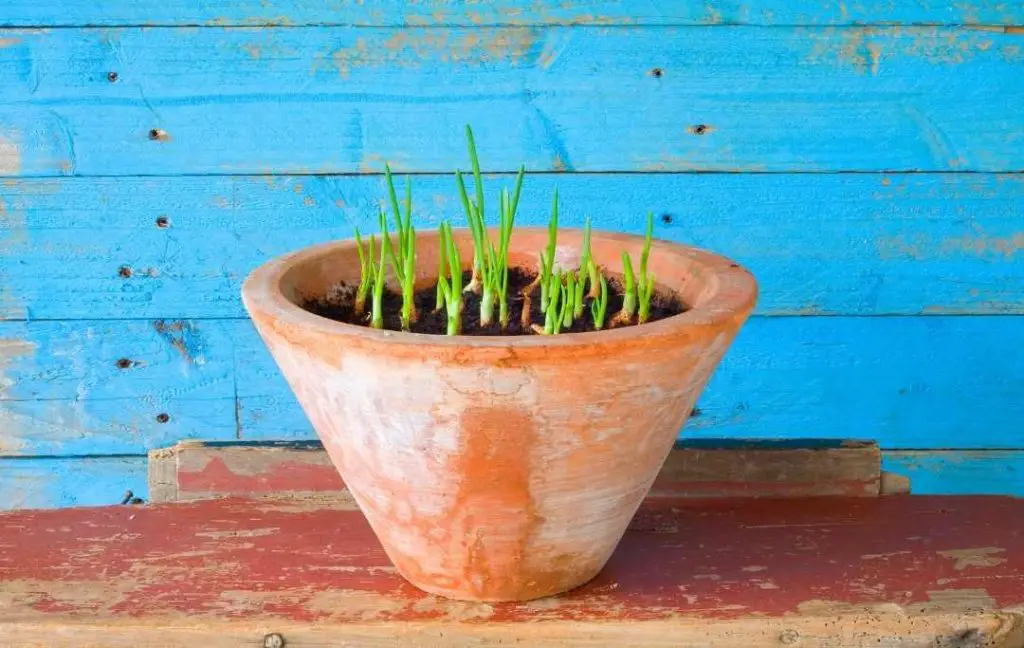
> Fill the pot with potting mix after sowing the seeds, cover the seeds with ¼ inch of seed starting formula. You will get all the information about sowing the seeds on the packet. The packet has all the instructions and tips regarding sowing the seeds.
> Keep the soil moist and the temperature of the soil must be about 60 to 65 degrees Fahrenheit.
> After 7 to 14 days you will see the seedlings will start emerging from the soil.
> When the seedlings start growing then they need plenty of light so you should place the pot on a sunny window sill or on a place where it gets maximum sun exposure. You can also arrange artificial light for plants.
> When the danger of frost passes then you can transplant seedlings in your raised garden bed. Make sure the thickness of the seedlings should be about a pencil.
> First, keep your pots outside for one week so the plants make themself ready for outdoor planting. Protect them from heavy wind and hot sun. Now prepare the location where you want to plant your green onion seedlings.
PREPARING SITE AND SOIL FOR RAISED BED FOR TRANSPLANTING SEEDLINGS
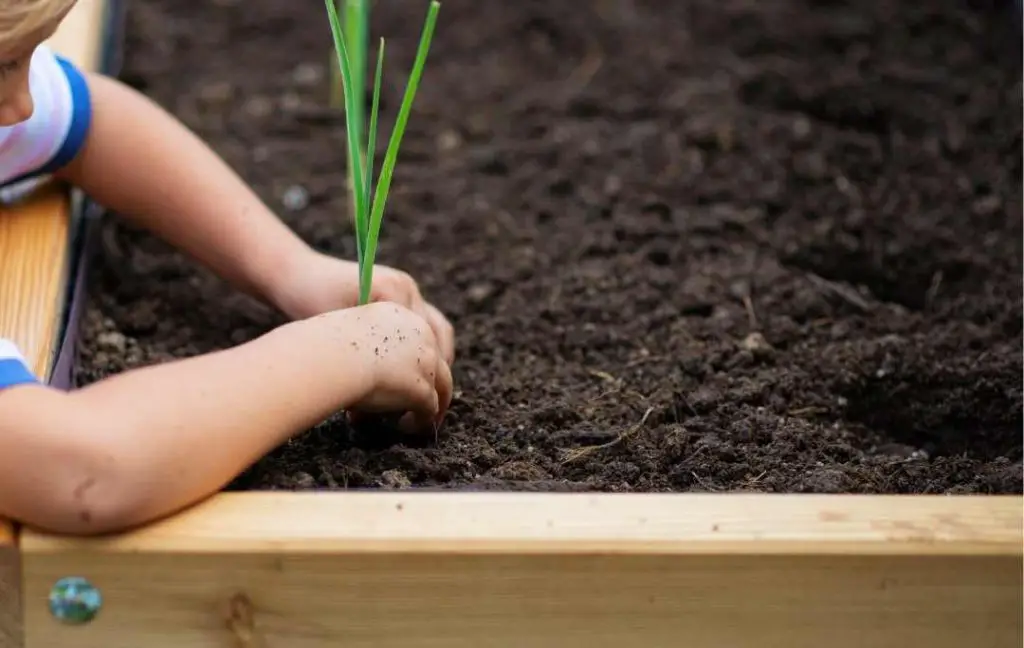
SUNLIGHT
The location and size of a raised bed are very important. Choose the location for your raised bed where your plants get another full sun exposure. 6 to. Hours of sunlight are very important for green onions.
SIZE
The width of the raised bed must be 2 to 3 feet. The wider bed can’t be managed easily. The middle plants will be neglected which is not good for getting a healthier crop of green onion. Weeding and harvesting become easier with the standard size of the raised bed.
SOIL
You should provide the best soil conditions to your plants so you will get fresh and robust growth. Rich compost will deliver all the basic nutrients to the soil. With the addition of compost, your soil becomes fertile.
If you are using garden soil then the pH of the soil must be between 6.0 and 7.0. Well-drained soil is preferred and you should avoid pooling or soggy conditions.
Here are simple steps if filling your raised bed.
- It is suggested that you should use high-quality soil in your raised bed and spread a 4-inch layer of compost on the surface of the soil. You can buy ready-made compost from any garden store or nursery or create your compost by using kitchen waste.
- Now on the top of the layer of compost spread a thin layer of blood meal. It will work as an amendment for the soil.
MAINTAINING GREEN ONIONS
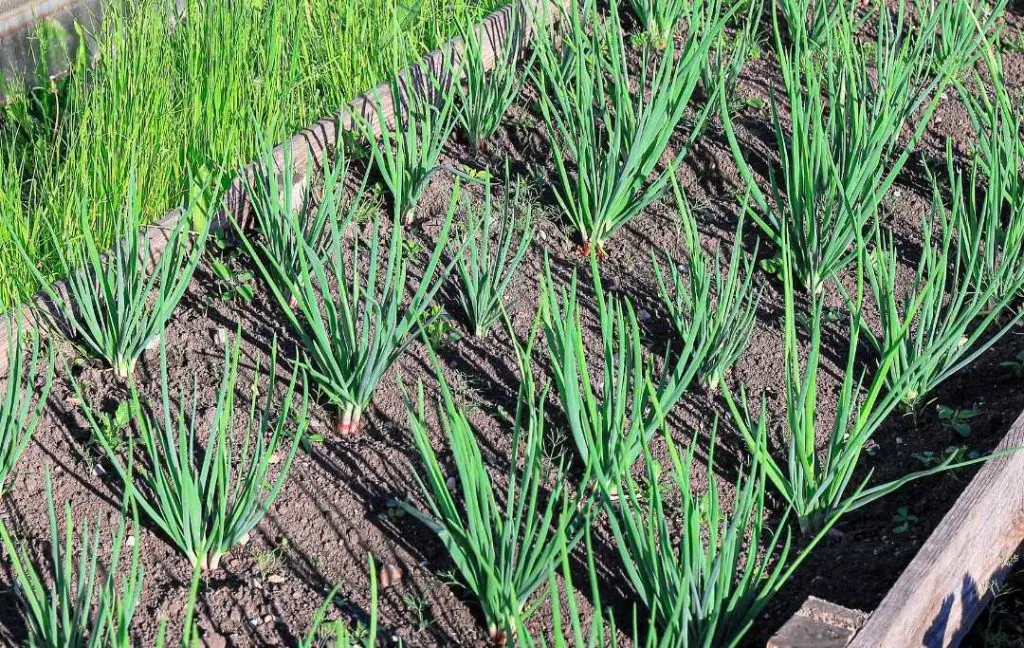
When your green onions are sprouted from the seeds then you can easily maintain your crop. Well-established plants of green onions need no special care.
Watering: Water your green onions plant one inch per week. In a raised bed soaker hose system works great for irrigation purposes.
Mulch: For retaining the moisture within the soil you can spread a layer of mulch on the top of the soil around the green onion plants. It will also help to surpass the weeds which are unwanted plants.
Weeds steal all the nutrients from the soil and your plants have to compete for nutrients. You can get rid of this problem by using mulch.
Keep your soil moist but not soggy. Your fingers work great for checking the dryness of the soil. If your finger feels that the soil is dry then you should water your plants if it feels moisture then you should not water the green onion plants.
You should perform this finger test once a week to check the moisture level in the soil. During the rainfall, you can reduce the amount of water. But on sunny days, especially in the summer season, your plants need more water.
It means the amount of water depends upon the weather condition. So you should increase or decrease the water according to the climate situation. The dry soil can result in the dryness of the bulbs of onions.
COMMON PESTS AND DISEASES
Following are the pests and the diseases which affect the growth of green onions.
CUTWORMS
Cutworms cut off the seedling at the soil level. For this problem, you should keep a paper cup collar around the base of the green onion plant. These insects affect young seedlings. The other way of controlling them is by handpicking.
ONION MAGGOTS
Onion maggots attack the bulb of the green onions rather than the leaves. As a result, the entire seedlings will eventually die. The best solution to this problem is that you should pull all the plants and use the greens to destroy the rest parts of the plant. Crop rotation is another solution to this problem.
THRIPS
Due to these tiny insects plant develops silvery-white streaks. You can use a heavy blast of water with the help of a garden hose to get rid of this problem.
DAMPING OFF
If you start green onions from the seeds then you will face the problem of this disease. The symptom of this disease is that the seedlings suddenly wilt and die for no clear reason.
This disease is caused by a fungus that causes abundant moisture. You should avoid overwatering and the use of a high amount of nitrogen fertilizers.
DOWNY MILDEW
The symptoms of this disease are whitish-grey patches on both sides of the leaves. Rotate crop is the solution to this disease. Avoid overwatering and provide an adequate amount of air for the breathing of your plants.
PINK ROOT ROT
In this disease, a fungus attacks the roots of green onion plants and turns them into light pink. The plant will be affected by this disease due to the deficiency of nutrients and drought due to which roots are not able to take up water and nutrients.
HARVESTING GREEN ONIONS
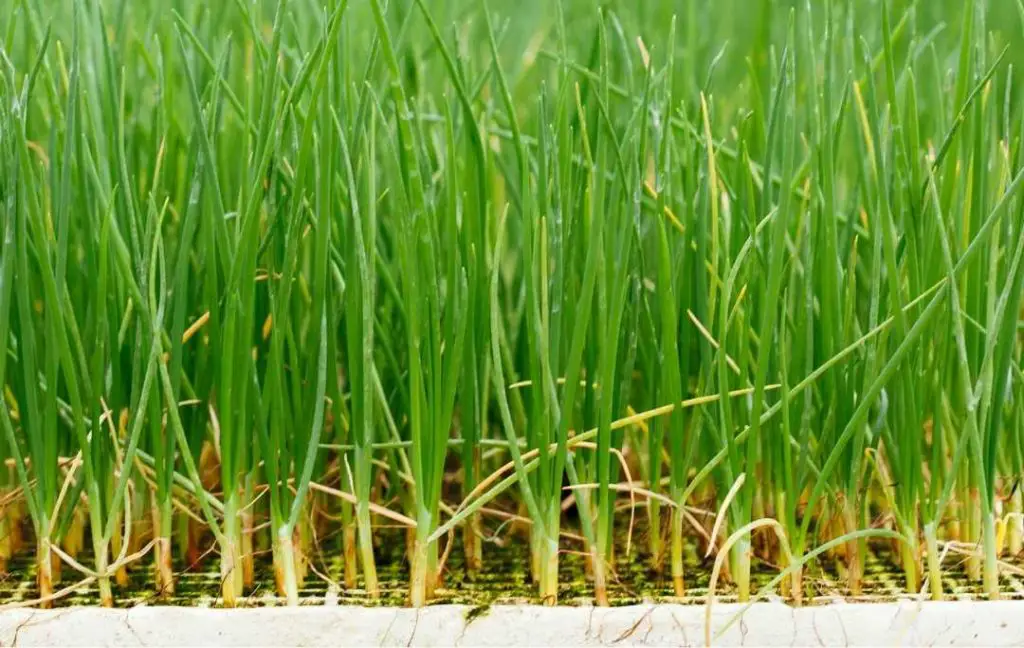
The best time of harvesting green onions is when they are young because at this stage they are very tender. Generally, green onions are ready to harvest within 70-90 days.
When you see the size of green onions is 6-8 inches tall and the bulbs have begun to swell then this is the right time of harvesting. Just gently pull down the tops of the green onion.
- You can also regrow the green onions. For regrowing purposes, you can leave a one-inch part above the part of the green onion when you are slicing green onions for your favorite dishes. This section can be used for regrowing purposes. Just place this root section about 1 inch deep in the soil of your raised bed. After placing the root lightly cover it with soil. Remember the root side should be down in the soil.
- Within a couple of weeks, you will see these sections will re-sprout. You can repeat this process several times by using the same section of root.
HOW TO STORE GREEN ONIONS?
It is best to eat the green onions fresh in cooking but you can store green onions in the refrigerator for about a week in a plastic bag. You should also keep a damp paper towel in a plastic bag with green onions.
This hack will help to keep them fresh. If you see any yellowed or shriveled leaves then pull them off before consuming. Green onions can be eaten raw or used in different dishes.
